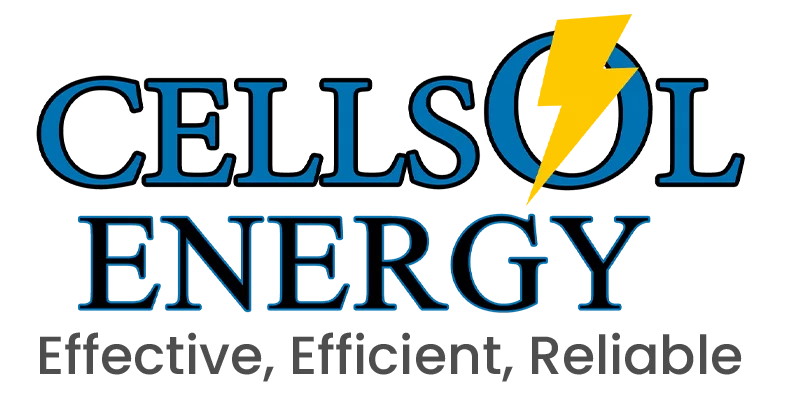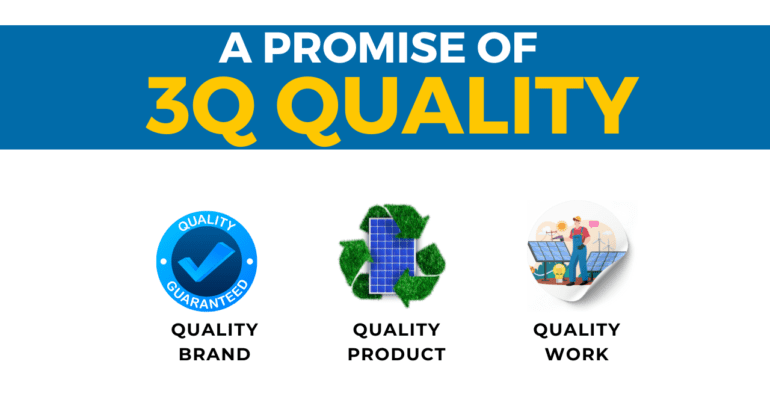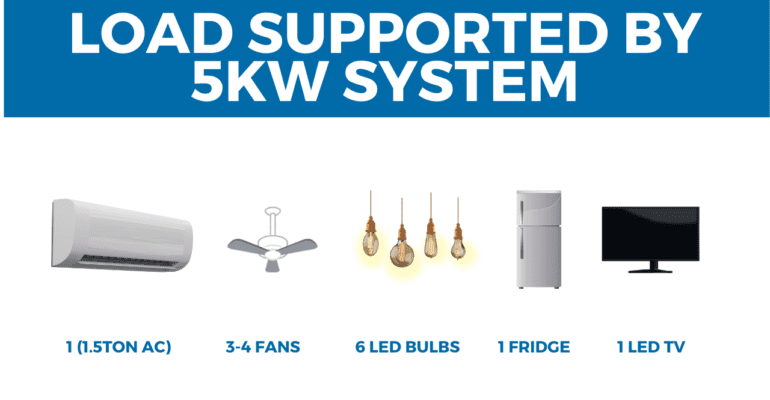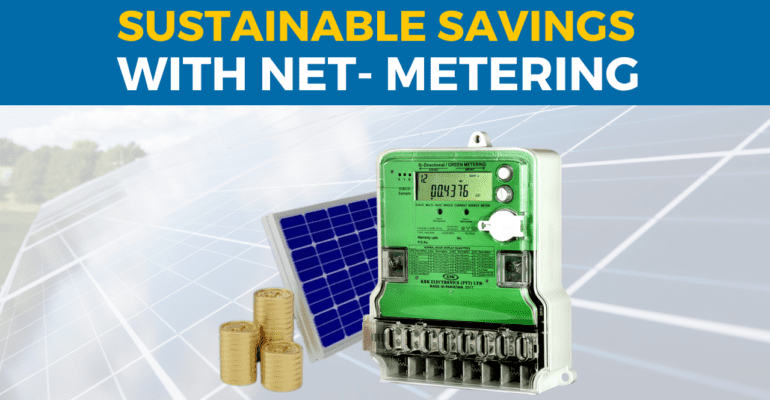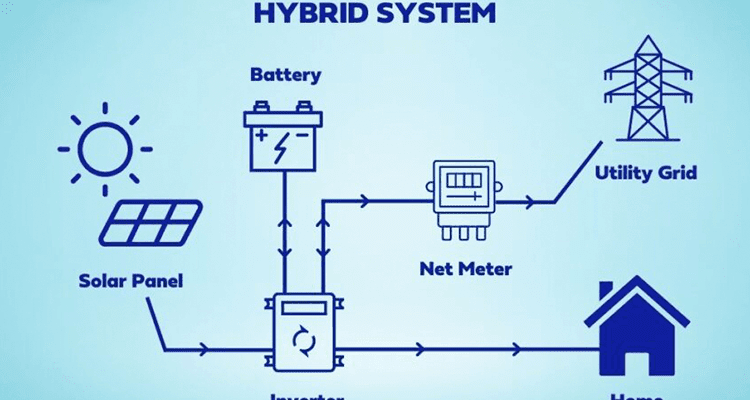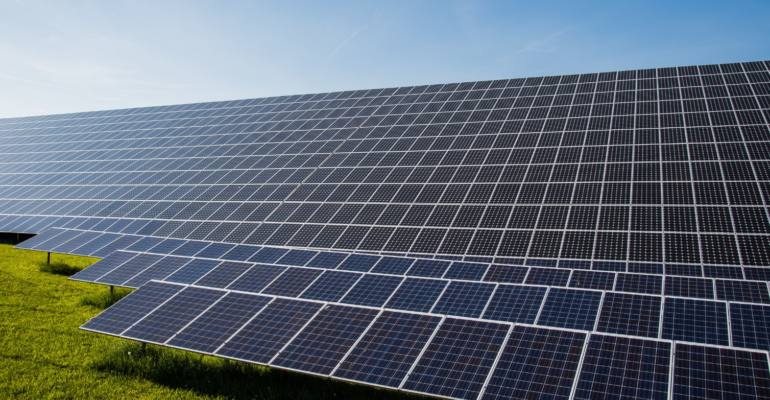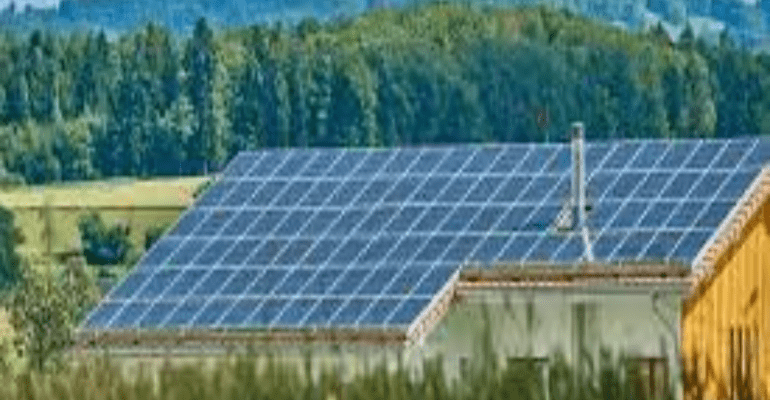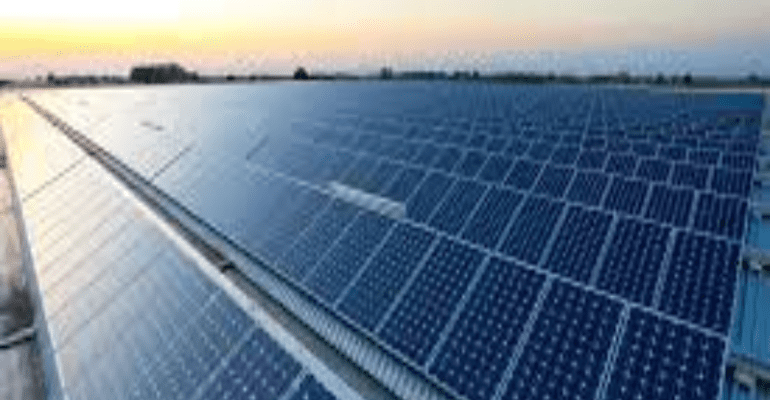Toll Free: +92-0311-17778-65
By Cellsol Energy
Solar Panels for Home
The present economic conditions of Pakistan demand to convert your energy needs directly to solar panels because electricity rates in Pakistan are at their peak and everyone is disturbed by this alarming situation. In such a worse condition solar energy is considered a hope as the cheapest source of energy for both home and industrial purposes. Suppose you are also suffering from these circumstances and want to save your much-needed money. In that case, you have to shift your electricity consumption from traditional resources to present modern modes of producing electricity. CellSol Energy is the top solar company in Pakistan and serves a large community all over the country. If you want to buy a first-class solar panel consult with the best solar company in Lahore. If you are interested in buying a solar system near your locality, this article is for you. You can contact us to hire our services at reasonable prices. Affordable Price at Cellsol Energy: There are many Solar Companies in Pakistan which are working and installing solar panels in Lahore. At present the prices are not fixed, varying day to day. In such unpredictable market conditions, our company CellSol Energy in Lahore offers their customers the most stable and reasonable price packages which you can afford easily. Solar company in Lahore’s best policy in this regard is that we present our customers with an open package and we don’t have hidden charges in the end to avoid any kind of inconvenience. Our price policy is clearly explained to our valuable customers before we start the work. Almost all solar panels look alike and finding their differences is not easy for a layman. Shopkeepers can easily detract from you and can sell their cheaper solar panels. This is the reason why many people pay more than the actual price of the solar panels. Types of Solar Panels: With every passing day the solar market is growing due to increasing demand for solar panels. Different solar companies in Pakistan are making solar panels of different qualities which are described as grades of the panels. Almost all solar panels look alike and finding their differences is not easy. This is the reason why many people pay more than the actual price of the solar panels. Scams with the customers breach their trust and it is good news for you. Our company CellSol Energy focuses on communication with their customers to avoid complications in the future. Our skilled engineers visit multiple times to the location where the solar system is installed before starting work. Engineers are bound to satisfy you completely otherwise you have an option to submit a complaint against the service provided to you. Quality Control: Our quality is our identity. Our solar company in Lahore has been serving a large sector in Lahore for the previous decades. We never compromise on standards and always install A-grade panels on working sites to increase efficiency. Low grades can never give the required output. It is important to note that solar panels are installed on the roofs of homes, hospitals, and industrial units where they face adverse climatic conditions like hot and cold climates, rain and sun heat etc. Low price solar panels cannot stand and bear such worse climatic conditions for longer periods and corrode earlier. These are some basic reasons why our company discourages this trend to install low-price solar panels to save money. Our installed panels are more durable and give output for longer periods saving your valuable assets which low-priced solar systems consume with the name of wear and tear. Conclusion: Due to a large variety of solar panels that look alike in shape, that’s why Scams are quite possible with the customers and hence can breach their trust between shopkeeper and the customer. Once the trust is broken it can not be rebuilt again. At present Solar Systems prices in Pakistan are not fixed, varying day to day. In such unpredictable market conditions, our best solar company in Lahore offers their customers the most stable and reasonable price packages which you can afford easily. Our company focuses on communication with their customers to avoid complications in the future. Our skilled worker visits multiple times to the location where the solar system is installed before starting work. Our services to buy solar systems in Lahore on cheap rates are available in Lahore and Pakistan. You can buy the solar panel of your choice anywhere from our recommended outlets. Beware of the frauds and don’t spend your money on less quality solar panels to avoid yourself from any loss. We are here for you to serve with our best skills. Low-graded solar panels cannot stand and bear such worse climatic conditions for longer periods and corrode earlier. These are some basic reasons why our company discourages this trend to install low-price solar panels to save money.
5KW Solar System Price in Pakistan
Pakistan is undergoing a daily spike in demand for 5KW solar system price in Pakistan, primarily due to rising electricity prices, chronic power outages, and load shedding. Installing a 5kW solar solution for your home has much primacy, including a dependable and independent power supply and monthly power bill savings of hundreds of rupees. If you combine your solar PV system with net metering, the salary even trebles, resulting in a net-zero electricity bill. Almost 570 units can be produced each month by the system. A closer study reveals that Pakistan devours between 500 and 600 mid-sized houses annually. For those whose annual electricity use is between 500 and 600 units, a 5kW solar structure is the best choice for their quarters. What Is a 5kw Solar System? In a day, a 5 kW solar system may generate over 20 kWh of power, or 19 units. It comprises nine 590-watt solar panels, a solar inverter, and additional needed parts. A 5kw system may provide middle-class families with enough power to run most of their household appliances, such as two 1.5-ton inverter air conditioners, fans, two LED TVs, and a refrigerator, on average per month. Cost of a 5 kW Solar System in Pakistan In Pakistan, a 5kW solar system with net dealing and on-grid pricing begins at Rs. 850,000. The converter brand, Growatt/Solis, comes with a 5-year warranty. This price includes installation fees, mounting shape for L2, and a 10kW on-grid inverter. You may cut your power costs dramatically by installing a 5kW solar system. On the other hand, a hybrid 5kW solar system with a 6kW Primax inverter and four tubular collection would cost Rs. 780,000. The cost of the system as a whole expand with the installation of batteries; therefore, hybrid solar inverters are often more costly than on-grid solar inverters. Pakistani On-Grid 5KW Solar System Price in Pakistan Because it doesn’t require batteries and simply needs a less expensive solar inverter, the 5 kW on-grid solar system is the most popular solar panel system in Pakistani houses. In Pakistan, the cost of a 5kva solar system begins at Rs. 850,000. It varies based on several parameters like the building type, the inverter’s brand and quality, the solar panel brand, and other crucial components. This can save a substantial amount of money each month. Pakistani Hybrid 5kW Solar System Cost Generally speaking, a hybrid solar system has batteries for backup power. They are more expensive because hybrid inverters can convert between grid, battery, and solar energy. The hybrid system also comes with more expensive batteries. A 12V 185-amp battery costs approximately 58,000 rupees on average, but dry batteries are far more costly and can cost up to lakhs. Because of this, it is difficult to give precise pricing for a hybrid 5kVA solar system in Pakistan because the cost of the system is influenced by both the quantity of batteries and the calibre of the solar inverter. Parts Of The 5KW Solar System These are the key parts of a 5 kW solar system, while many more make up a complete system. Sunlight Panels Solar inverter, either hybrid or off-grid An optional solar battery Mounting Framework A DB box with a circuit breaker Pakistan’s Gains From Installing A 5kW Solar System The following are some advantages of setting up a 5kW solar power system in Pakistan: Cut Down on Electricity Costs Your annual power costs can be lessen by up to 70% with a 5kW Solar System in Lahore. This is due to the fact that you will be producing free power on your own using the sun. Boost Grid Independence You won’t be as dependent on the utility grid if you have a 5 kW solar system. This suggested that even in the event of a power outage, you will be able to keep your lights on. Eco-Friendly One clean and renewable energy source is solar energy. You will contribute to environmental protection and lowering your carbon footprint by installing a solar system. Conserve Cash You can save money by not relying totally on the national grid for your power needs if you install a 5kW solar system. A 5kW solar panel’s initial install costs are likewise reasonable in Pakistan. With the net dealing feature, you can even sell the extra electricity your solar system causes back to the national grid. Best of Class By doing this, you can earn credits that you can use at night or when your solar panels are not making enough electricity, in insertion to lowering your power bill. Which Appliances Can Be Powered By A 5kW Solar System? Between 5000 and 7000 kWh may be processed annually by a 5 kv solar system, roughly 19 units per day or 570 units per month. A house can easily power two 1.5-ton inverter air conditioners, fans, two LED TVs, and a refrigerator with a 5 KW solar system. Please be aware, though, that while the 5kw system might not be able to electricity every device at once, it can electricity the majority of them.
Net Metering Pakistan
Through “Net Metering Pakistan,” owners of solar panels can sell any extra power build during the day to the national grid, overcast their electricity costs. Despite being a relatively recent idea in Pakistan, net dealing has a lot of benefits because of the nation long summers. Some actions need to be taken, which we will go over in depth in this post, to have net metering installed at home. Remembering that the NEPRA 2015 rule prohibits individuals from applying directly for net metering is crucial. Instead, users need to contact a solar company registered with the AEDB to use the net metering option. Before delving into the procedure, let’s examine net metering and how it operates in Pakistan. The Definition of Net Metering A buyer with solar panels can use net dealing to return any excess energy they produce to the grid and obtain credits from the utility source toward their electric bills. Your solar panels feed back excess power to the grid when they cause more electricity than you use. The utility house computes the difference between the power you cause and use at the end of each month. Only the net amount of power used will be billed to you; any extra power you provide to the grid will be charged to your account. Net Metering Companies in Pakistan is a fantastic method for lessening electricity costs and supporting the domain. It is a great alternative to consider if you are thinking about adding solar panels to your house. Technology for Net Metering For net metering, hybrid or on-grid solar panels are linked with a bidirectional power meter. A three-phase electrical connection must be made to these solar panels to replenish and balance the extra energy supplied to the national grid. You receive credits for the quantity of energy you sell to the grid. The credits can be redeemed for free electricity units. For solar system owners, the net metering system in Pakistan is a relatively new idea that offers many advantages. Due to the plenty of sunlight in the nation, solar panels produce more power during the day than is needed. However, if a net metering-compliant Net Metering solar system in Lahore is not positioned on your rooftop, this excess energy will be useless. The following guidelines explain the trends in state and utility net metering policies: Installation of Solar System The first and most important phase is installing a solar system that complies with Cellsol Energy Net metering. Cellsol Energy successfully serves home, commercial, and industrial clients in all three areas. We are excellent at providing small-scale industrial systems up to multi-megawatt ones and 10 kw home systems. Application Preparation By SRO 892 (1) 2015 guidelines, the application preparation is the first stage in the second phase. Our esteemed clients benefit from our assistance with every stage of the application procedure for a solar net metering system in Pakistan, making the process simpler and more seamless. Inspection and NOC issuance If the application is approved, the Energy Department will begin the inspection phase. The electrical inspection team will inspect the system in accordance with LESCO SOP and SRO 892(1)/2016. Following the system’s satisfactory inspection, you will receive an NOC. Signature of Agreement The Distributor Generator (Consumer) and LESCO will sign a three-year agreement. This is a big milestone. Under the terms of this legal agreement, you will be able to input excess energy into the national grid. Generation License Allotment NEPRA will receive the signed contract between you and LESCO in exchange for a generation license. After the governing body verifies the formal agreement, you will be permitted to operate as an independent power producer for the following three years. Net Meter Activation Lastly, but just as importantly, LESCO will turn you into an autonomous power-generating entity. Once the generation license has been allotted successfully, your net meter will be enabled, enabling you to save and earn at the same time. In brief A technology known as “net metering” is used to sell the extra electricity produced by solar panels back to the national grid in exchange for lower monthly electricity Net Metering Cost in Pakistan. In Pakistan, however, people cannot apply for net metering directly. To make use of the net metering features, you must get in touch with a solar company that is registered with the AEDB. The solar provider will represent the consumer in preparing the application and obtaining permission from NEPRA and the Punjab Energy Department. The consumer will then be able to produce renewable energy and sell it back to the national grid, which would lower power rates after the required departments have signed an agreement and issued the NOC and Generation License. Choose Cellsol Energy pros to approve your Net Metering application quickly and efficiently. They have a high success rate in getting approvals for Net Metering in Lahore and a wealth of knowledge.
5000 Watt Solar Panel Price in Pakistan
Solar energy is becoming increasingly popular in Pakistan, as it is a renewable and sustainable source of energy that can help to reduce electricity costs. If you are considering installing a solar panel system in your home or business, one of the most important factors to consider is the price. The price of a 5000 watt solar panel system in Pakistan varies depending on a number of factors, including the brand of solar panels and inverters used, the size and type of mounting structure, and the cost of installation. However, on average, you can expect to pay between 1,150,000 and 1,200,000 rupees for a 5000 watt solar panel system in Pakistan. Here are some of the factors that can affect the price of a 5000 watt solar panel system in Pakistan: Brand of solar panels and inverters: The brand of solar panels and inverters that you choose will have a significant impact on the price of your system. Some brands are more expensive than others, but they may also offer better quality and performance. Size and type of mounting structure: The size and type of mounting structure that you need will depend on the size of your solar panel system and the type of roof that you have. If you have a complex roof, or if you need to install a large system, the cost of the mounting structure will be higher. Cost of installation: The cost of installation will vary depending on the experience of the installer and the difficulty of the installation. If you have a complex roof, or if you need to install a large system, the cost of installation will be higher. If you are considering installing a 5000 watt solar panel system in your home or business, it is important to get quotes from Solar experts of Cellsol Energy before making a decision. Benefits of Installing a 5000 Watt Solar Panel System There are a number of benefits to installing a 5000 watt solar panel system in your home or business, including: Reduced electricity costs: Solar panels can help you to reduce your electricity costs significantly. In fact, many people are able to completely eliminate their electricity bills by installing solar panels. Increased energy independence: Solar panels allow you to generate your own electricity, which makes you less dependent on the grid. This can be especially beneficial in areas where power outages are common. Environmental benefits: Solar energy is a clean and renewable source of energy that does not produce any greenhouse gas emissions. By installing solar panels, you can help to reduce your environmental impact.
Solar System Price in Pakistan
Are you considering installing a solar system in Pakistan? If so, you’re probably wondering how much it will cost. In this blog post, we’ll discuss the factors that affect the price of a solar system in Pakistan, and we’ll provide you with a general range of prices. Factors Affecting Solar System Price in Pakistan The price of a solar system in Pakistan varies depending on a number of factors, including: The size of the system 2. The type of solar panels 3. The inverter 4. The batteries 5. The installation costs In general, you can expect to pay between Rs. 100,0000 and Rs. 500,0000 for a solar system that can generate enough electricity to power your average home. Solar System Price Range in Pakistan How to Save Money on Solar System Costs There are a few things you can do to save money on solar system costs in Pakistan: Get quotes from multiple solar installers. This will help you to compare prices and find the best deal. Cellsol Energy offers the best prices with the best services and products. This can save you money on the cost of installation. Conclusion The price of a solar system in Pakistan varies depending on a number of factors. However, in general, you can expect to pay between Rs. 10,00000 and Rs. 50,00000 for a solar system that can generate enough electricity to power your average home. There are a few things you can do to save money on solar system costs, such as getting quotes from multiple solar installers and applying for government incentives. Learn about the factors that affect the price of a solar system in Pakistan, and find out how you can save money on solar system costs. Solar energy is a clean, renewable source of energy that can save you money on your energy bills.
Hybrid Solar Systems in Pakistan
Hybrid solar systems in Pakistan combine the benefits of both on-grid and off-grid solar systems. They can provide you with electricity from the grid when it is available, and they can also store energy in batteries so that you can have power even when the grid is down. This makes hybrid solar systems a great option for homes and businesses in Pakistan, where power outages are common. How do hybrid solar systems work? Hybrid solar systems use a hybrid solar inverter to convert the DC electricity generated by the solar panels into AC electricity that can be used in your home or business. The inverter also controls the charging and discharging of the batteries. When the sun is shining and the grid is up, the hybrid solar inverter will use the solar energy to power your home or business. Any excess solar energy will be stored in the batteries. When the sun is not shining or the grid is down, the hybrid solar inverter will use the stored energy in the batteries to power your home or business. What are the benefits of hybrid solar systems in Pakistan? Hybrid solar systems offer a number of benefits, including: • Reduced electricity bills: Hybrid solar systems can help you to reduce your electricity bills by offsetting your reliance on the grid. • Increased energy security: Hybrid solar systems can provide you with electricity even when the grid is down. • Environmental benefits: Hybrid solar systems can help to reduce your carbon footprint and contribute to a cleaner environment. *How much does a hybrid solar system cost in Pakistan? * The cost of a hybrid solar system in Pakistan depends on the size of the system and the components that you choose. *Is a hybrid solar system a good investment in Pakistan? * A hybrid solar system can be a good investment in Pakistan, especially if you have frequent power outages. However, it is important to do your research and calculate the potential savings before you decide to install a hybrid solar system. If you are interested in learning more about hybrid solar systems in Pakistan, please contact us at Cellsol Energy. We would be happy to help you assess your solar potential and design a hybrid solar system that meets your needs.
Common Myths and Misconceptions About Solar Energy
Common Myths and Misconceptions About Solar Energy Solar energy has been growing in popularity as a source of renewable energy. However, there are still several myths surrounding solar energy that may be preventing people from fully embracing its potential. In this article, we will explore some of the most common solar energy myths and separate fact from fiction. Myth #1: Solar panels are too expensive This is one of the most common myths about solar energy. While it is true that solar panels were quite expensive a decade ago, the cost of solar has dropped significantly in recent years. In fact, solar panels are now more affordable than ever, and the cost continues to decrease every year. Moreover, solar energy has become an affordable option for homeowners due to federal and state incentives and financing options. Myth #2: Solar panels don’t work in cold or cloudy weather Solar panels work by converting sunlight into electricity. While it is true that solar panels perform best in direct sunlight, they still work on cloudy days and in cold weather. In fact, some studies have shown that solar panels can actually be more efficient in colder temperatures. Additionally, solar panels do not need direct sunlight to work, but only daylight. Therefore, they can still produce energy even on cloudy days. Myth #3: Solar panels require too much maintenance Another myth surrounding solar energy is that solar panels require a lot of maintenance. In reality, solar panels require very little maintenance, as they have no moving parts. The only maintenance required is occasional cleaning to ensure that the panels are free of dust and debris. Moreover, most solar panel manufacturers offer warranties of 20-25 years, which means that the panels will be functioning well for decades. Myth #4: Solar panels are not aesthetically pleasing Some people are concerned that solar panels are unsightly and will detract from the appearance of their home or building. However, modern solar panels are designed to be sleek and visually appealing. Moreover, solar panels can be integrated into the design of a building or home, or even installed on a separate structure such as a carport or pergola. Myth #5: Solar energy is unreliable One of the biggest myths surrounding solar energy is that it is unreliable. Some people believe that solar energy is not consistent because it only works when the sun is shining. However, solar energy systems can be designed to store excess energy produced during the day for use at night or on cloudy days. Additionally, the reliability of solar energy has been proven in many countries, including Germany, where solar energy accounts for a significant portion of the country’s energy mix. Myth #6: Solar panels are only for sunny states Contrary to popular belief, solar energy can be harnessed in almost any state in the US, including those with colder climates or more overcast weather. In fact, some states with lower levels of sunlight, such as New York and New Jersey, have some of the fastest-growing solar energy markets. Additionally, solar energy can be used to power homes and buildings in rural areas that are not connected to the grid. Myth #7: Solar panels are bad for the environment This myth may be based on the misconception that solar panels are made with toxic materials or that their manufacturing process is highly polluting. However, solar panels are made from silicon, which is abundant and nontoxic. The manufacturing process for solar panels has also become much cleaner in recent years, with many companies using renewable energy to power their production facilities. Myth #8: Solar panels decrease property value Some people may be concerned that installing solar panels on their home or building will decrease its value. However, studies have shown that homes with solar panels actually sell for more than homes without solar panels. Moreover, solar panels can be considered an attractive feature for Bottom of Form.
Solar Energy for Agriculture: Improving Efficiency and Sustainability
Solar Energy for Agriculture: Improving Efficiency and Sustainability As the world continues to grapple with the challenges of climate change, there is an increasing need for sustainable solutions that can help mitigate its impacts. One such solution that is gaining popularity is agrivoltaic solar panels. Agrivoltaics, also known as dual-use solar systems, are an innovative way of integrating solar panels into agricultural lands, allowing farmers to harness the benefits of both solar energy and agriculture. What are Agrivoltaic Solar Panels? Agrivoltaic solar panels are photovoltaic (PV) solar panels that are installed on agricultural lands. The panels are elevated above the ground to allow crops to grow underneath them. The panels provide shade to the crops, which can help reduce water evaporation and protect them from extreme weather conditions such as hailstorms. The panels also reduce soil erosion by acting as a barrier against wind and heavy rainfall. How do Agrivoltaic Solar Panels Work? Agrivoltaic solar panels work by harnessing the sun’s energy to produce electricity while allowing crops to grow underneath. The panels are typically installed on a raised structure, which allows for airflow and provides shade to the crops. The panels are tilted at an angle to maximize the amount of sunlight they receive, and the excess electricity produced is fed into the grid or stored in batteries. Benefits of Agrivoltaic Solar Panels There are several benefits of agrivoltaic solar panels, including: Increased crop yield: Studies have shown that crops grown under agrivoltaic solar panels can have higher yields due to the shade provided by the panels, which can help reduce water stress and increase photosynthesis. Reduced water usage: The shade provided by agrivoltaic solar panels can also help reduce water evaporation, which can help farmers save water and reduce their water bills. Renewable energy: Agrivoltaic solar panels provide a source of renewable energy that can help reduce greenhouse gas emissions and mitigate the impacts of climate change. Reduced land use: By integrating solar panels into agricultural lands, farmers can maximize their land use efficiency and reduce the amount of land needed to produce both food and energy. Diversified income streams: Agrivoltaic solar panels can provide farmers with an additional source of income by allowing them to sell excess electricity back to the grid. Challenges of Agrivoltaic Solar Panels While agrivoltaic solar panels offer many benefits, there are also some challenges that need to be addressed. These include: Initial installation costs: The upfront cost of installing agrivoltaic solar panels can be high, which may deter some farmers from adopting the technology. Maintenance costs: Agrivoltaic solar panels require regular maintenance, which can be costly and time-consuming. Compatibility with crops: Not all crops are compatible with agrivoltaic solar panels, and farmers need to choose crops that can thrive in the shade provided by the panels. Regulatory barriers: There may be regulatory barriers that prevent farmers from installing agrivoltaic solar panels, such as zoning laws and land-use regulations. Case Studies Despite the challenges, agrivoltaic solar panels are gaining popularity around the world. In Japan, agrivoltaic solar panels have been installed on rice paddies, where they have been shown to increase rice yields by up to 40% while reducing water usage by 75%. In the United States, a vineyard in California has installed agrivoltaic solar panels, which have helped reduce water usage by 33% while producing enough energy to power the entire vineyard. Conclusion Agrivoltaic solar panels offer a promising solution to the challenges of climate change and sustainable agriculture. By integrating solar panels into agricultural lands, farmers.
The Future of Solar Technology: Emerging Trends and Innovations
The Future of Solar Technology: Emerging Trends and Innovations The Future of Solar Technology: Advancements and Opportunities for Clean Energy Solar technology has come a long way in recent years, and the future of solar technology looks even brighter. As the world looks for more sustainable energy sources, solar energy has emerged as a promising solution. Solar technology has become more efficient, affordable, and accessible, and the future of solar technology looks even more promising. Solar energy has been used for centuries, but it has only been in the last few decades that solar technology has become commercially viable. The cost of solar panels has decreased significantly, making it an affordable option for businesses and households alike. In addition, advances in technology have made solar panels more efficient, making them capable of producing more energy in less time. The future of solar technology looks even more promising with the emergence of new materials and designs. For example, researchers are exploring the use of perovskite, a promising material that has shown great potential for use in solar cells. Perovskite solar cells are more efficient than traditional silicon-based solar cells, and they are also cheaper to manufacture. Another promising development in solar technology is the use of thin-film solar cells. Thin-film solar cells are flexible, lightweight, and can be applied to a variety of surfaces, including windows and walls. This makes them ideal for use in urban areas, where space is at a premium. The future of solar technology is not just about improving the efficiency and affordability of solar panels. It is also about integrating solar energy into our existing infrastructure. This includes developing smart grids that can manage the flow of energy from solar panels, wind turbines, and other renewable energy sources. It also includes developing energy storage solutions that can store excess energy generated by solar panels during the day and release it during peak demand periods. One of the most promising opportunities for solar technology is in the transportation sector. Electric vehicles (EVs) are becoming more popular, and solar technology could help power them. For example, solar panels could be integrated into the roofs of EVs, allowing them to recharge while parked. This would extend the range of EVs and reduce the need for traditional charging infrastructure. The future of solar technology is also about making solar energy more accessible to everyone. This includes developing microgrids that can provide electricity to remote and underserved communities. It also includes developing portable solar panels that can be used to power devices in areas without access to electricity. There are also opportunities for solar technology in space. Solar panels are already used to power satellites, but there is potential for them to be used to power space missions. For example, solar sails could be used to propel spacecraft through space, using the energy from the sun. Despite the many opportunities for solar technology, there are still challenges that need to be addressed. One of the biggest challenges is the intermittency of solar energy. Solar panels only produce energy during the day when the sun is shining, and this energy must be stored for use at night or during periods of low sunlight. Developing effective energy storage solutions is crucial for the future of solar technology. Another challenge is the need for more efficient and sustainable manufacturing processes for solar panels. The production of solar panels can be resource-intensive and generate a significant amount of waste. Developing more sustainable manufacturing processes will be important for the future of solar technology. In conclusion, the future of solar technology looks bright. Advancements in materials, designs, and infrastructure are making solar energy more efficient, affordable, and accessible. Solar technology has the potential to revolutionize the way we generate and use energy, and it could play a critical role in addressing the challenges of climate change. The development of sustainable and efficient solar technology should be a top priority for governments, businesses, and individuals around the world. By investing in solar technology, we can create a more sustainable and prosperous future for generations to.
Top 5 solar energy companies in Lahore
Top 5 solar energy companies in Lahore As Pakistan looks towards a sustainable future, solar energy has emerged as a key player in the energy mix. Lahore, the cultural capital of Pakistan, has been at the forefront of this shift towards renewable energy. In this article, we will take a closer look at the top 5 solar energy companies in Lahore, which are driving this change and transforming the energy landscape of the city. Premier Energy Premier Energy is one of the top solar energy companies in Lahore and has been providing clean energy solutions for residential, commercial, and industrial clients since 2013. The company offers a wide range of solar products, including solar panels, inverters, batteries, and mounting structures. Premier Energy also provides installation and maintenance services, making it a one-stop-shop for all solar energy needs. With a commitment to quality, innovation, and customer satisfaction, Premier Energy has become a leading player in the solar energy sector in Pakistan. The company has installed over 100MW of solar power across the country and has received numerous awards and certifications for its exceptional work. Nizam Energy Nizam Energy is another top solar energy company in Lahore that is dedicated to providing sustainable energy solutions for homes, businesses, and communities. Founded in 2013, the company has a team of experienced engineers and technicians who design, install, and maintain solar systems of all sizes. Nizam Energy offers a range of solar products, including solar panels, inverters, and batteries, and specializes in off-grid and hybrid solar systems. The company also provides energy auditing and consultancy services to help clients optimize their energy consumption and reduce their carbon footprint. Reon Energy Reon Energy is a leading solar energy company in Lahore and has been providing turnkey solar solutions for over a decade. The company offers a range of services, including design, installation, commissioning, and maintenance of solar systems for residential, commercial, and industrial clients. Reon Energy has a strong commitment to sustainability and has installed over 300MW of solar power across Pakistan. The company has also received several awards and certifications for its exceptional work, including the International Safety Award from the British Safety Council. SolarSigma SolarSigma is a Lahore-based solar energy company that specializes in providing innovative and sustainable energy solutions for homes, businesses, and industries. The company offers a range of solar products, including solar panels, inverters, batteries, and monitoring systems, and provides installation and maintenance services. SolarSigma has a team of skilled engineers and technicians who design and install customized solar solutions to meet the unique needs of each client. The company also offers financing options to make solar energy more accessible and affordable for everyone. Premier Solar Premier Solar is a Lahore-based solar energy company that provides high-quality solar products and services for residential, commercial, and industrial clients. The company offers a range of solar products, including solar panels, inverters, batteries, and mounting structures, and provides installation and maintenance services. Premier Solar has a team of experienced professionals who design and install customized solar solutions to meet the specific needs of each client. The company also provides energy auditing and consultancy services to help clients optimize their energy consumption and reduce their energy bills. Conclusion: As Lahore looks towards a sustainable future, these top 5 solar energy companies are leading the way in transforming the energy landscape of the city. With their commitment to quality, innovation, and customer satisfaction, these companies are providing sustainable and affordable energy solutions for homes, businesses, and industries. Whether it’s Premier Energy’s wide range of solar products or Nizam Energy’s expertise in off-grid and hybrid solar systems, these companies are paving the way towards a brighter and cleaner future. So, if you’re looking to
Search
Categories
Popular Tags
Subscribe Us
Subscribe us & get
latest news & articles to inbox.
